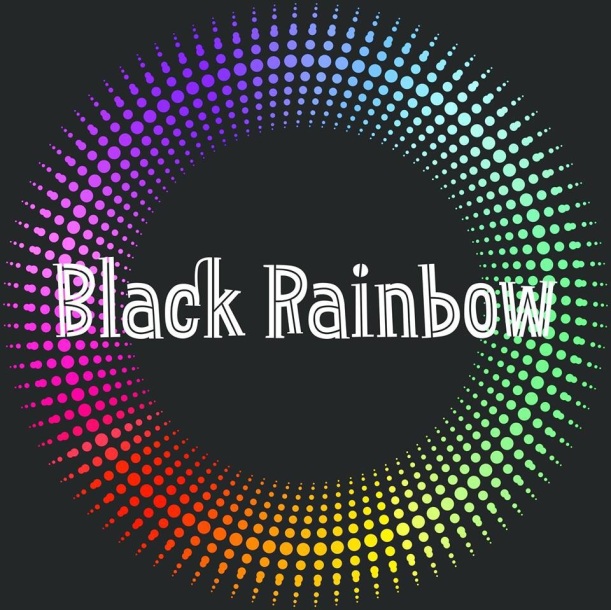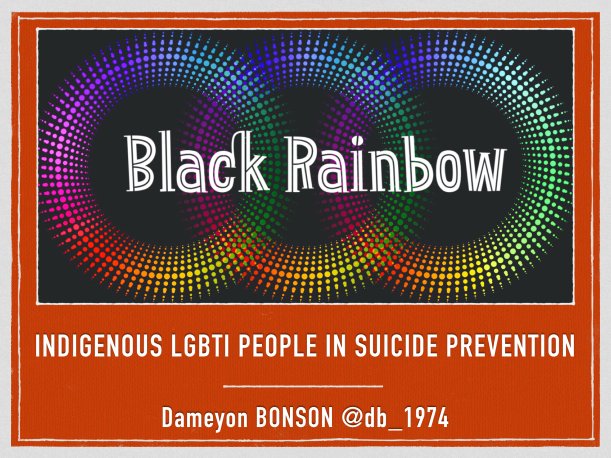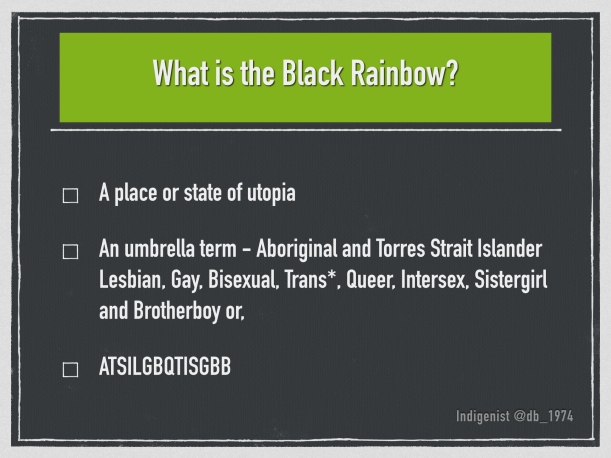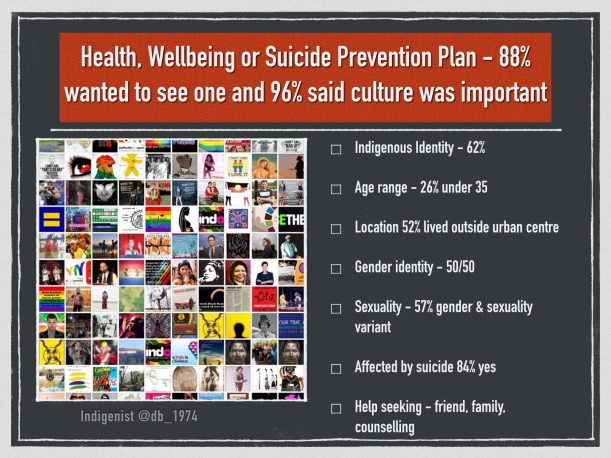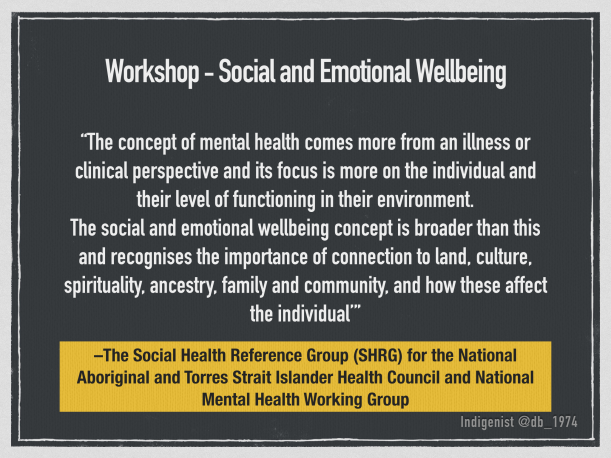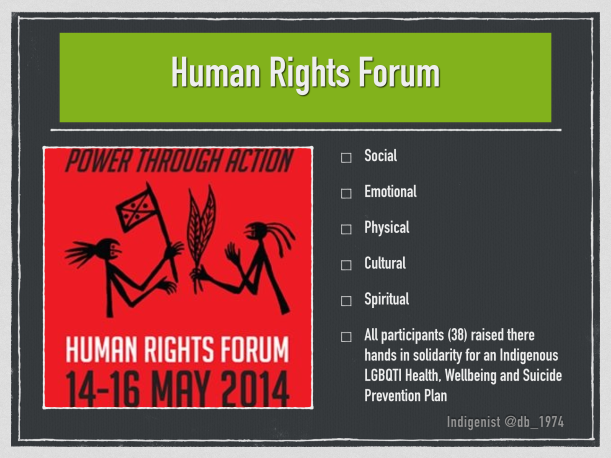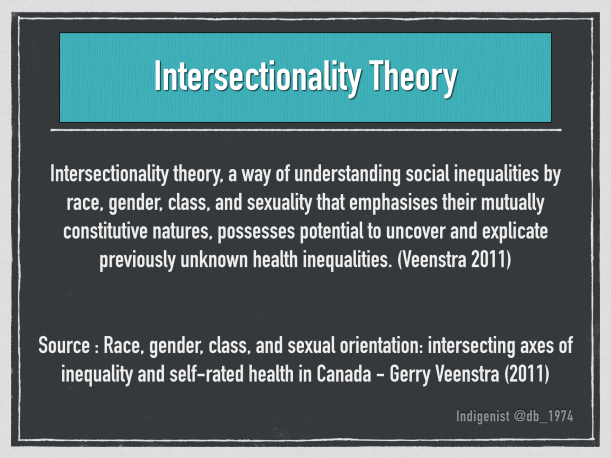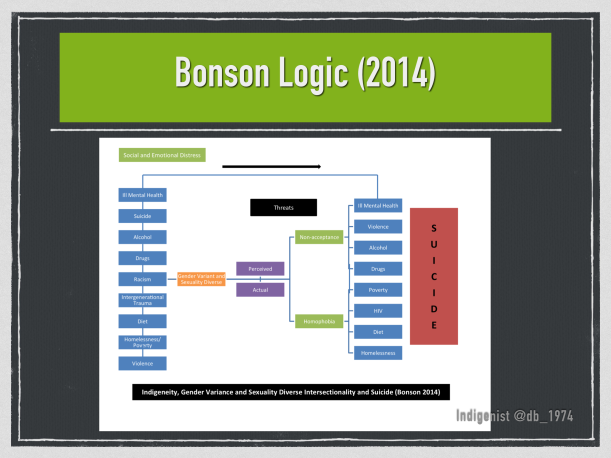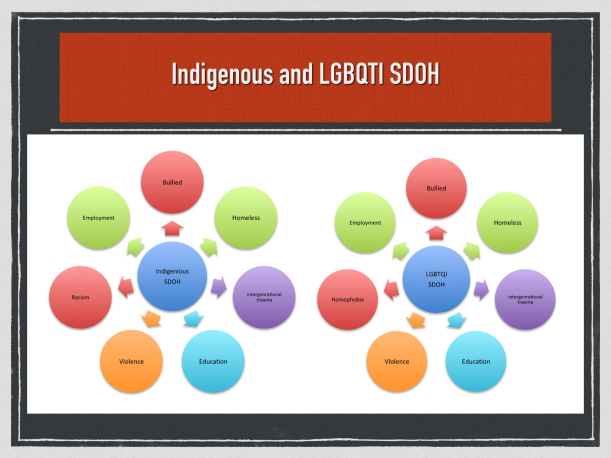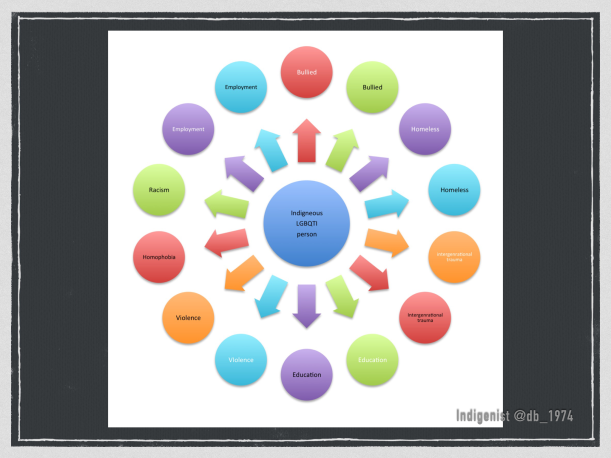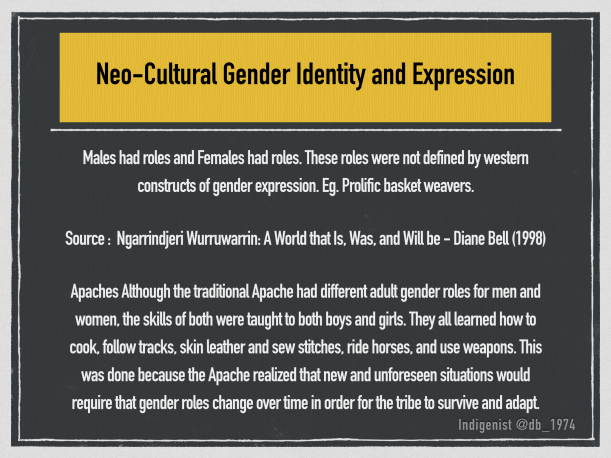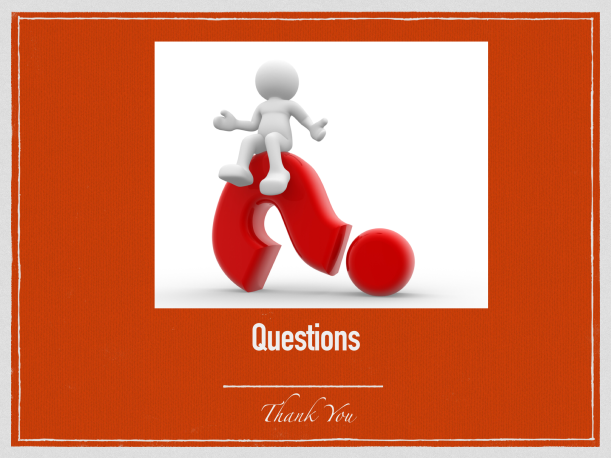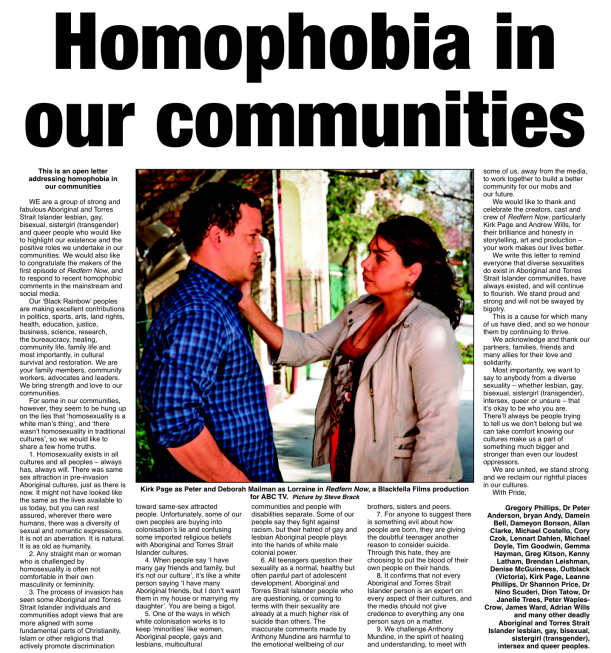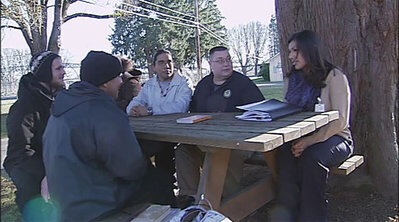Black Rainbow
There is very little Indigenous anthropological material regarding the historical place of LGBTI Sistergirl and Brotherboy Indigenous Australians. What has been accessible is predominately framed within sexual health or to be specific a HIV/AIDS context; not our histories or roles and functions. Black Rainbows aims to make visible Indigenous LGBQTI Sistergirl and Brotherboy peoples.
Here in Australia there is limited information/resources/stories accessible of Brotherboys in Men’s Health. There is also limited information in the general space of positive social and emotional wellbeing, mental health and suicide prevention.
The representation of other colonised nations’ multiple sexualities and genders has a place informing the discussion regarding Indigenous Australian LGBTI Sistergirls and Brotherboys. On the Black Rainbow facebook page, what is shared is what is available. Some reports are out of print and have had to be sourced from overseas (Did you meet any Malagas by Dr Dino Hodge was purchased from Amazon) or hunted down through archives (Malaga to Malaga by Gary Lee which was purchased as scanned PDF copies from a Canberra library).
I have been heartened by discovering The Postgrad Sista: A Blog about Indigenous Gender Diversity and become good friends with the author. In the Guest section of Indigenous Consultancy you will find a couple of blogs by The Postgrad Sista.
Cultural considerations that prohibit certain things being shared and conversations and sharing does also happen away from non-Indigenous spaces.
Black Rainbow is run from Broome, WA.
Please feel free to share anything you come across and you can either message directly on here or email BlkRnBow@gmail.com
Black Rainbow is part of a larger network and conversation and its primary function is about visibility and keeping the conversation going. In under three months it has managed to do just that. Last week Black Rainbow was the front page of the most circulated gay and read gay street press, the Star Observer.
Check it out here : http://www.starobserver.com.au/news/deadly-initiative-black-rainbow-flies-flag-proudly/11814
Black Rainbow exists primary as a resource of information sharing, conversation and visibility. It will no doubt grow as it too is organic and it is hoped that it will grow beautifully.
It is not the voice of Indigenous Australian LGBTI Sistergirls and Brotherboys but one of the many mechanisms for those voices.
Thank you for your interest in Black Rainbow, your membership is much appreciated.
The Black Rainbow Facebook Page
Our Facebook page is here : www.facebook.com/BlackRainbowAustralia
Here are some posters Black Rainbow developed.


